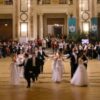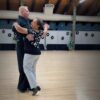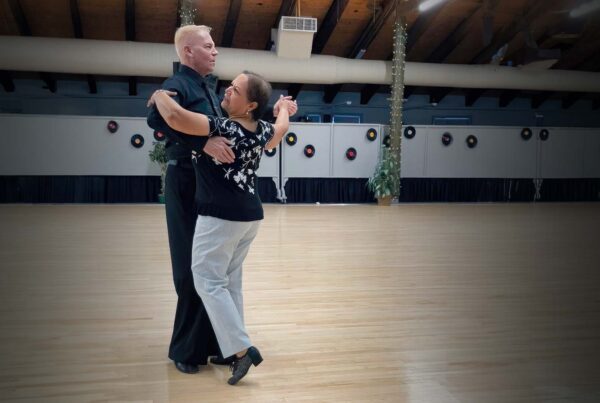As we all work to recover from the over-indulgence of the holiday season, people fill gyms and fitness classes everywhere. It’s great to work on your fitness level at any time. But did you know that, according to numerous studies, ballroom dancing can reverse the age of the brain itself?
A study published in the journal Frontiers in Human Neuroscience shows that older people who routinely partake in physical exercise can reverse the age of the brain. But the study also showed that only one activity stood head and shoulders above the rest for this impact. Dancing.
Dr. Kathrin Rehfeld, the lead author of the study and based at the German center for Neurodegenerative Diseases, said that all exercise “has the beneficial effect of slowing down or even counteracting age-related decline in mental and physical capacity.” This study showed that two different types of physical exercise – Dancing and Endurance Training – both increase the area of the brain that declines with age. But according to Dr. Rehfeld, “In comparison, it was only dancing that lead to noticeable behavioral changes in terms of improved balance.”
Volunteers in the study averaged 68 years of age. They were assigned an 18-month weekly program of learning dance routines or endurance and flexibility training. Both groups showed increased size of the hippocampus. This is the area of the brain most commonly associated with age-related decline and memory-related diseases. The group that were doing endurance training such as cycling had little opportunity to make regular changes in their routine. However, the dance group had to learn something new each week and this contributed so strongly to the results.
Dr. Rehfeld explained that “We tried to provide our seniors in the dance group with constantly changing dance routines of different genres… to keep them in a constant learning process. The most challenging aspect for them was to recall the routines under the pressure of time and without any cues from the instructor.”
In comparison, it was only dancing that lead to noticeable behavioral changes in terms of improved balance.
This is not the first study to find a strong relationship between brain health and dance. Previous studies from other researchers had shown that there’s a strong correlation between learning and music. This may also play a strong role in the brain’s ability to grow more youthful with dance programs. In addition, dance routines that change regularly, such as the step patterns used in ballroom dancing, require the neural pathways to remain active. Other activities such as tennis, cycling or running don’t need to use different neural paths as they are largely repetitive, so they don’t create the same results.
Dancing requires that you are aware of your body. You have to be disciplined, coordinated and balanced. Your flexibility improves. You develop better posture and stronger muscles. You need to control your breathing. Faster dances such as Quickstep and Jive engage the heart in the same way as HIIT (High Intensity Interval Training) programs do.
On top of that, dancing is a social fitness approach. At the gym you might occasionally talk to someone but generally people are isolated. The same goes for running, cycling and other forms of exercise. With dancing, and especially ballroom dancing, you are connected to another person during your exercise and generally surrounded by others. You can change partners. The music is constantly changing and the dances are varied. All of these factors make dancing a delightful way to get and stay in shape. Plus, it gets your brain in shape by strengthening the hippocampus to protect you against cognitive decline as you get older.
The researchers in this study concluded that dancing is “a powerful tool to set new challenges for the body and mind, especially in older age.”
You may also like Dance: fitness for your brain













